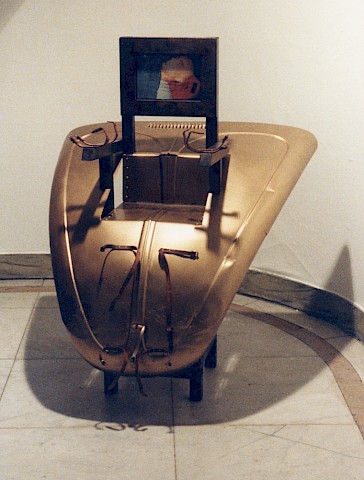|
1991 |
Burn Bundy Burn
| |

| ||
|
Burn Bundy Burn refers to the chanting of those words by hundreds of people who gathered at the Florida State Prison on 24 January 1989 to celebrate the execution of serial killer Ted Bundy. Before his execution, Ted Bundy confessed to more than 30 murders but estimates run to -according to the source- more than 100 women he allegedly killed. The trail of his murders runs from Washington, Oregon, Idaho, Utah, Colorado and finally Florida. Ted Bundy often approached his victims in public, asking them for help, allegedly with a broken arm or to load his surfboard. Once they arrived at his concealed parked Volkswagen Beetle, they were knocked unconscious, handcuffed and taken away to be violently murdered in a secluded spot. On two occasions, Bundy managed to escape from prison and continue his killing career. On 12 February 1978, Bundy was arrested in a stolen Volkswagen Beetle by police officer David Lee near the Alabama border. He still tried to escape but was overpowered after two warning shots. Not knowing that he had one of the FBI’s Most Wanted in the car, Lee heard Bundy say “I wish you had killed me.” Hundreds of revellers sang, danced and set off fireworks in a meadow opposite the prison as the execution was carried out, cheered as the white hearse carrying Bundy’s corpse left the prison. T-shirts and posters were sold with the slogan ‘Burn Bundy Burn’ on them. For his portrait of Ted Bundy, I bring together the bonnet of a Volkswagen Beetle with a wooden interpretation of an electric chair, which was used to execute Bundy. The back seat of the chair features a laser-printed photo of a dead Bundy on the dissection table. Burn Bundy Burn is part of a series of six ‘killer portraits’ exhibited as ‘True Crime Art’, a double exhibition with Anne-Mie Van Kerckhoven at Galerie Transit in 1991. Besides Ted Bundy, Neville Heath aka The Ladykiller, David Berkowitz aka Son of Sam, John Christie aka The Strangler from 10 Rillington Place, Dennis Nilsen aka Killing for Company, and Dean Corll aka The Candyman were also portrayed there. The work is a first ‘mashup’work, in which several existing objects with their own meaning are brought together to create a new meaning, as is done by DJs in the music world. Other names for the genre are mesh, mash up, mash-up, blend, bastard pop or bootleg. Well-known mashup DJs include Fatboy Slim, 2 Many DJs, Schmolli, Moule, ToTom, A plus D, Manriki, Pilchard, Dunproofin’, Earlybird, Apollo Zero, Clive$ter, Go Home Productions, Lobsterdust,.... Volkswagen hood, wood, leather straps, glass, laserprint, 140cm x 120cm x 110cm. Property of the artist. | ||
|
Shown at: | ||